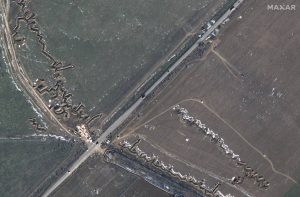The United States has strategically positioned six Terminal High Altitude Area Defense (THAAD) air defense missile systems at Site Excalibur, near Guam’s newest Marine Corps base. This significant move bolsters air defense capabilities in the Northwest Pacific, aiming to address potential threats from countries like China and North Korea. Guam, a key US territory strategically located in the Pacific, serves as a pivotal outpost for regional security.
The THAAD deployment, a part of the US Army’s 38th Air Defense Artillery Brigade based in Japan, involves about 200 soldiers from Guam and an additional 100 personnel operating radars in Japan. Alongside the THAAD launchers, the site boasts advanced radar systems, communication gear, and armored vehicles.
Site Excalibur is integral to the US’s comprehensive missile defense strategy for Guam, aiming to establish a 360-degree defense system across the island by 2027. This initiative underlines the US commitment to bolstering defensive capabilities in the Pacific region, ensuring the safety of its territories and allies.
THAAD, designed to counter various missile threats, operates in the terminal phase of flight, intercepting and destroying incoming missiles at high altitudes. Its advanced technology employs kinetic energy for interception, eliminating the need for explosive warheads, marking a significant leap in missile defense.
With engagement capabilities spanning 200 kilometers and altitudes up to 150 kilometers, THAAD’s radar has a detection range of up to 1,000 kilometers, showcasing its effectiveness against ballistic missile threats. Deployed in strategic locations, including Guam, South Korea, and the UAE, THAAD’s interoperability with other defense systems enhances its efficacy.
Guam’s significance lies not only in its geographical position but also in its military infrastructure, hosting crucial US bases like Andersen Air Force Base and Naval Base Guam. These installations provide essential logistical and operational support, allowing the US to project power effectively in the Asia-Pacific region.
Guam’s role extends beyond a military outpost; it serves as a deterrent to adversaries and reinforces US commitments to regional stability. Its strategic location allows rapid deployment and logistics support during crises, solidifying its importance in the US defense strategy in the Asia-Pacific.






